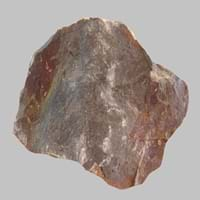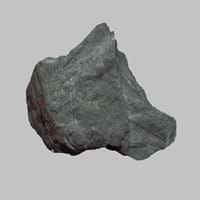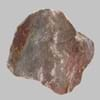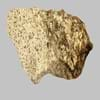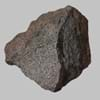Definition
Hawaiite is volcanic rock that resembles basalt. It is an olivine basalt with intermediate composition between alkali olivine and mugearite
Taconite is a low-grade iron ore which belongs to sedimentary rock and containing about 27% iron and 51% silica
Origin
Hawaii Islands
Western Australia, Minnesota
Discoverer
Joseph Iddings
Newton Horace Winchell
Etymology
From Hawaii Islands
From the name of Taconic Mountains in New England
Class
Igneous Rocks
Sedimentary Rocks
Sub-Class
Durable Rock, Medium Hardness Rock
Durable Rock, Medium Hardness Rock
Group
Volcanic
Not Applicable
Other Categories
Opaque Rock
Coarse Grained Rock, Opaque Rock
Texture
Glassy, Massive, Porphyritic, Scoriaceous, Vesicular
Banded, Trellis
Color
Black, Brown, Light to Dark Grey
Red, Reddish Brown
Durability
Durable
Durable
Scratch Resistant
Yes
Yes
Appearance
Dull and Soft
Layered, Banded, Veined and Shiny
Interior Uses
Decorative Aggregates, Floor Tiles, Flooring, Homes, Hotels, Interior Decoration, Kitchens
Decorative Aggregates, Entryways, Flooring, Homes, Interior Decoration
Exterior Uses
As Building Stone, As Facing Stone, Paving Stone, Garden Decoration, Office Buildings
As Building Stone, Garden Decoration, Paving Stone
Other Architectural Uses
Curbing
Curbing
Construction Industry
As Dimension Stone, Cobblestones, Rail Track Ballast, Roadstone
As Dimension Stone, Used for flooring, stair treads, borders and window sills.
Medical Industry
Not Yet Used
Not Yet Used
Antiquity Uses
Artifacts
Artifacts
Commercial Uses
Creating Artwork, Sea Defence
As a touchstone, Cemetery Markers, Creating Artwork
Types
Not Available
Not Available
Features
Has High structural resistance against erosion and climate, Very fine grained rock
Is one of the oldest rock
Archaeological Significance
Famous Monuments
Easter Island in the Polynesian Triangle, Pacific Ocean
Data Not Available
Sculpture
Not Yet Used
Used
Famous Sculptures
Not Applicable
Data Not Available
Pictographs
Used
Not Used
Petroglyphs
Used
Not Used
Figurines
Not Yet Used
Used
Formation
Hawaiite is a fine-grained, hard rock that forms when bits of lava shoot out of volcanoes and reach the Earth's surface.
Taconite is a type of sedimentary rock formed when a river carries or transports pieces of broken rock as it flows. When the river reaches a lake or sea, its load of transported rocks settles or deposits at the bottom of sea or lake.
Mineral Content
Olivine, Plagioclase, Pyroxene
Hematite, Magnetite, Quartz
Compound Content
Aluminium Oxide, CaO, Iron(III) Oxide, FeO, Potassium Oxide, MgO, MnO, Sodium Oxide, Phosphorus Pentoxide, Silicon Dioxide, Titanium Dioxide
Fe, Iron(III) Oxide, Silicon Dioxide
Types of Metamorphism
Impact Metamorphism
Not Applicable
Types of Weathering
Biological Weathering
Biological Weathering, Mechanical Weathering
Types of Erosion
Not Applicable
Chemical Erosion, Coastal Erosion, Glacier Erosion, Water Erosion, Wind Erosion
Grain Size
Not Applicable
Large and Coarse Grained
Fracture
Conchoidal
Uneven, Splintery or Conchoidal
Streak
Not Available
White
Porosity
Less Porous
Highly Porous
Luster
Not Available
Earthy
Compressive Strength
Not Available
Cleavage
Not Applicable
Imperfect
Toughness
Not Available
1.5
Specific Gravity
Not Available
5-5.3
Transparency
Opaque
Translucent to Opaque
Density
Not Available
Not Available
Specific Heat Capacity
Not Available
Resistance
Heat Resistant, Pressure Resistant, Wear Resistant
Heat Resistant, Impact Resistant, Pressure Resistant, Wear Resistant
Deposits in Eastern Continents
Asia
India, Russia
China, India, Iran, Iraq, Oman, Russia, Saudi Arabia, Taiwan, Thailand, Vietnam
Africa
South Africa
Kenya, Morocco, South Africa, Tanzania
Europe
Iceland
Austria, France, Greece, Italy, Malta, Poland, Portugal, Serbia, Spain, Sweden, United Kingdom
Others
Hawaii Islands
Greenland, Mid-Atlantic Ridge
Deposits in Western Continents
North America
Canada, USA
Canada, Mexico, USA
South America
Brazil
Bolivia, Brazil
Deposits in Oceania Continent
Australia
Not Yet Found
New South Wales, Queensland, South Australia, Western Australia
All about Hawaiite and Taconite Properties
Know all about Hawaiite and Taconite properties here. All properties of rocks are important as they define the type of rock and its application. Hawaiite belongs to Igneous Rocks while Taconite belongs to Sedimentary Rocks.Texture of Hawaiite is Glassy, Massive, Porphyritic, Scoriaceous, Vesicular whereas that of Taconite is Banded, Trellis. Hawaiite appears Dull and Soft and Taconite appears Layered, Banded, Veined and Shiny. The luster of Hawaiite is not available while that of Taconite is earthy. Hawaiite is available in black, brown, light to dark grey colors whereas Taconite is available in red, reddish brown colors. The commercial uses of Hawaiite are creating artwork, sea defence and that of Taconite are as a touchstone, cemetery markers, creating artwork.
